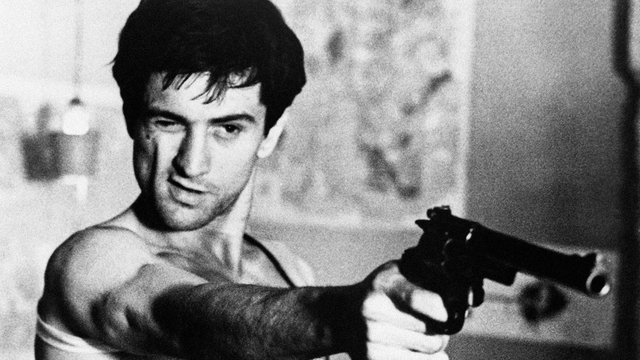
Paul Schrader was 26 and broke when he wrote Taxi Driver.
''In 1973 I had been through a particularly rough time, living more or less in my car in Los Angeles. riding around all night, drinking heavily, going to porno movies because they were open all night, and crashing some place during the day. Then, finally, I went to the emergency room in serious pain, and it turned out I had an ulcer. While I was in the hospital, talking to the nurse, I realized I hadn’t spoken to anyone in two or three weeks. It really hit me, an image that I was like a taxi driver, floating around in this metal coffin in the city, seemingly in the middle of people, but absolutely, totally alone.
So after I got out of the hospital, I crashed at an ex-girlfriend's place, and I just wrote continuously. The first draft was maybe 60 pages, and I started the next draft immediately, and it took less than two weeks. I sent it to a couple of friends in L.A., but basically there was no one to show it to [until a few years later]. I was interviewing Brian De Palma, and we sort of hit it off, and I said, "You know, I wrote a script," and he said, "OK, I'll read it." (1)
Philips (producer) said:
It took several years to get made. One day Paul suggested we see a rough cut of [Scorsese's] Mean Streets, and midway through, I really felt this is our guy. Johnny Boy [played by Robert De Niro] is our actor. So we made a proposal to Marty and Bob's agent. They both had to do it or neither. I mean it was silly, in retrospect.
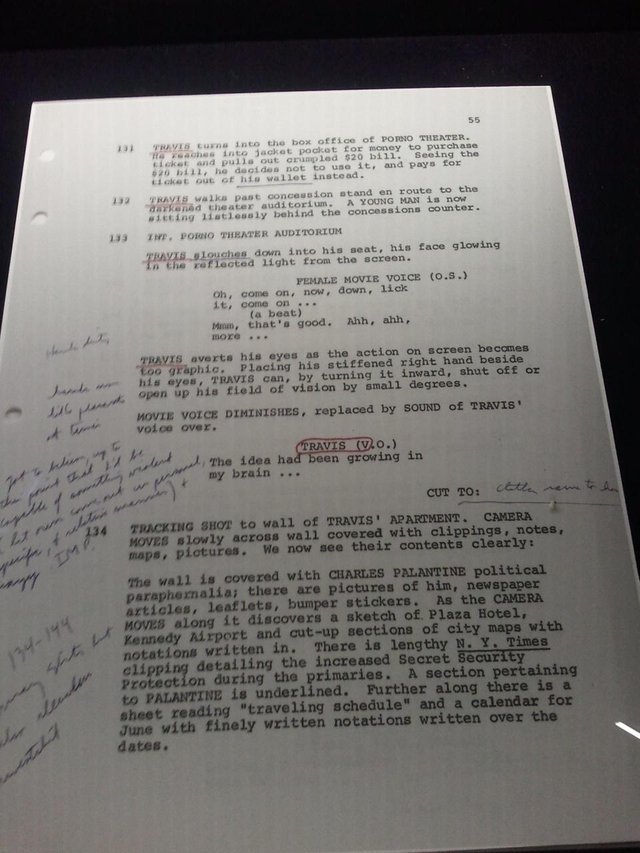
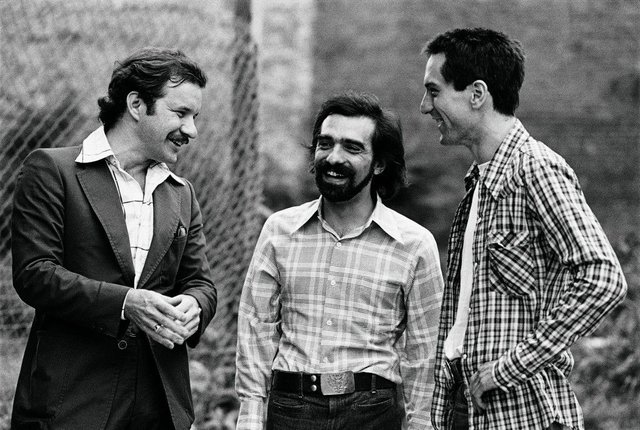
Here's the whole screenplay if anyone is interested in reading it:
https://issuu.com/lafamiliafilm/docs/taxi_driver__1975-04-29_-_paul_schr/2
PLOTLINE & ANALISYS
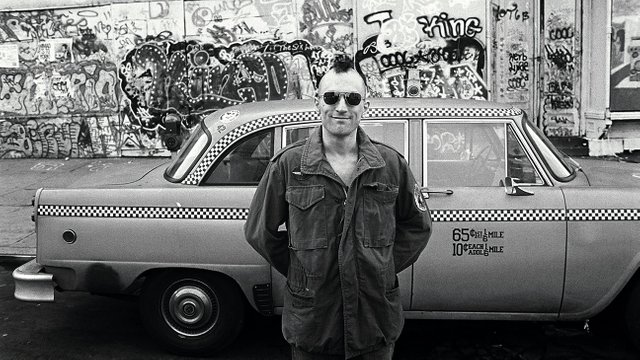
The most accurate and direct characterization of Travis Bickle comes from the blond election campaign aide Betsy who quotes Kris Kristofferson´s song The Pilgrim: Chapter 33 from his 1971 album The Silver Tongued Devil and I: ''he's a prophet and a pusher, partly truth, partly fiction. A walking contradiction.''
Although it is not explicitly stated in the film, it is pretty safe to assume that Travis is a Vietnam Veteran. The film only gives a few, but telling hints to this. He was honorably charged from the Marines in May 1973 ( the last United States soldiers left Vietnam on March 29th), he has a Vietnamese flag in his messy one-room apartment and later shaves his head in a Mohawk style. Amy Taubin establishes in her book Taxi Driver a connection between Travis hair cut and his possible past by pointing out that DeNiro and Scorsese learned from one of the stunt men on the film that, in Vietnam, guys in Special Forces gave themselves mohicans on the eve of a dangerous mission.
The mohican was a sign that they were in killer mode and should be left alone.(Taubin 68)
Travis suffers from insomnia, which could be a symptom of a post-traumatic stress disorder that is rooted in his Vietnam experiences. He is barely educated (''Some, here and there you know'', he says to the Personnel Officer, when he applies for the cabbie job) and seems pretty inarticulate but keeps a journal. He despises all the ''whores, skunk pussies, buggers, queens, fairies, dopers, junkies, sick, venal''. Disgusted he tells us : ''Each night when I return the cab to the garage, I have to clean the cum off the back seat. Some nights, I clean off the blood.'' nbut like the street whores he cannot select whom he provides his service to and drives anywhere, anytime. He is lonely and has a deep longing for human closeness and sexuality and apparently chosen not to ease his urge by visiting prostitutes but visits porno-flicks after work in a desperate attempt to relax. (2)
Schrader himself said that “The whole film takes place inside that man's [Travis'] head; that's why it's not a realistic movie." (Schrader ). Kolker neatly concluded that “Scorsese does want to `expose` the inner life of his character, but not to explain it. The internal life of Travis Bickle remains an enigma throughout the film.” (Kolker 1980, S.224)
Travis views himself as "God's lonely man," yet the point of "God's Lonely Man," an essay by Thomas Wolfe from which Schrader took this phrase, is that loneliness is a trait that all men possess, even if each man believes his feelings are original and unique. Travis's loneliness, combined with his charisma, makes him fascinating. Travis's racism and violent actions are not endearing, but we can sympathize with his loneliness and with his early attempts to integrate with society. When Travis first asks Betsy on a date, he succeeds at playing the charming young man. His later smiles may seem hysterical or maniacal, but when he walks right up to Betsy's desk and smiles, he is charming. We want him to succeed with Betsy, and we are just as surprised as Betsy is when Travis takes her to a porn film. Like Betsy, we were wrong to believe Travis was innocuous and sympathetic. Travis lives on the extreme outskirts of what is acceptable, but because we know him so intimately, we can sympathize with him even when his actions are unforgivable. (3)
CAMERAWORK
Several styles of camerawork in Taxi Driver reveal Travis's loneliness and his distance from society. In general, the shots in Taxi Driver are slow and deliberate. After Travis applies to be a taxi driver, he walks out of the dispatcher garage, and as he does so, the camera pans from right to left across the screen as the cabs drive right, in the opposite direction. The other taxis seem to be going forward, in the direction we read and in the direction that picture narratives usually move. Travis walks the other way, and he is moving in the wrong direction even faster than the camera, so it takes a few moments for the camera to catch up to him. The shot indicates that something isn't quite right about Travis. Something about him isn't going the right way.
Scorsese has said he believes that the most important scene in Taxi Driver is the one showing Travis on a payphone in a hallway, trying to speak to Betsy. As this one-sided conversation takes place, the camera moves from Travis to a shot of an empty hallway around the corner. No people or motion fill the shot, and the hallway has no visual elements to attract the eye. This camera move prevents us from looking at Travis in his shame at losing Betsy, and the fact that neither participant in the phone conversation is visible conveys the fact that no real communication is taking place. The hallway suggests the path the film will take from this point on. Soon after this conversation, Travis changes from any lonely man to "God's lonely man," on a path toward what he views as his destiny—a path as straight and narrow as the hallway. (3)
The film has a certain stylistic resonance with "Mean Streets" (1973), the first Scorsese film in which Keitel and De Niro worked together. In the earlier film Scorsese uses varying speeds of slow-motion to suggest a level of heightened observation on the part of his characters, and here that technique is developed even more dramatically; as the taxi drives through Manhattan's streets, we see it in ordinary time, but Travis' point-of-view shots are slowed down: He sees hookers and pimps on the sidewalks, and his heightened awareness is made acute through slow motion.
The technique of slow motion is familiar to audiences, who usually see it in romantic scenes, or scenes in which regret and melancholy are expressed--or sometimes in scenes where a catastrophe looms, and cannot be avoided. But Scorsese was finding a personal use for it, a way to suggest a subjective state in a POV shot. And in scenes in a cab driver's diner, he uses closeups of observed details to show how Travis's attention is apart from the conversation, is zeroing in on a black who might be a pimp. One of the hardest things for a director to do is to suggest a character's interior state without using dialog; one of Scorsese's greatest achievements in "Taxi Driver" is to take us inside Travis Bickle's point of view. (4)
EXTERNAL LINKS
1. Quentin Tarantino recounts a Hollywood rumor that Scorsese once contemplated murdering a studio executive who wanted to edit his film, and talks about how Scorsese’s classic influenced him.
2. Cinematographer Michael Chapman discusses his work on Taxi Driver
BEHIND THE SCENES PHOTOS
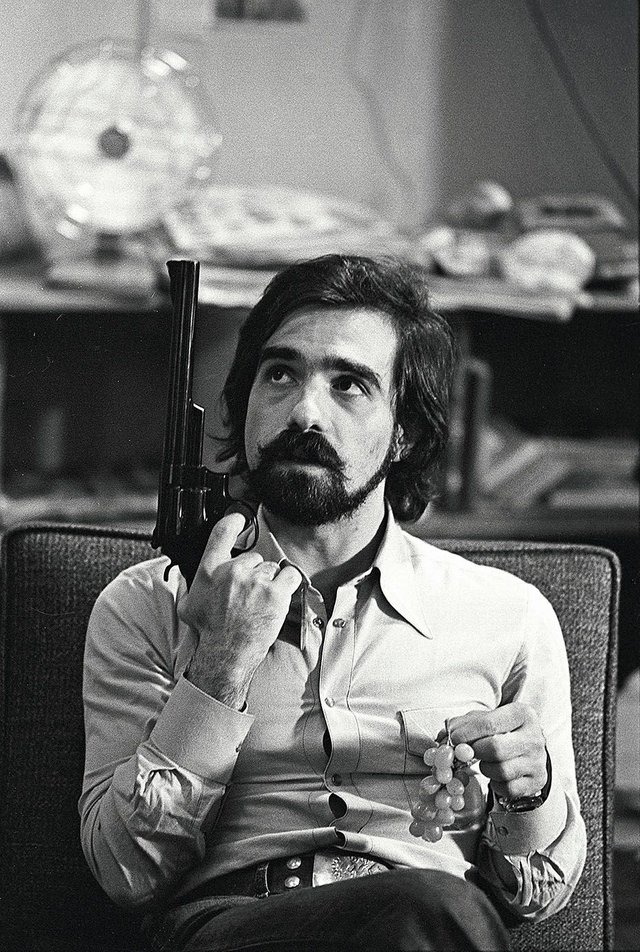
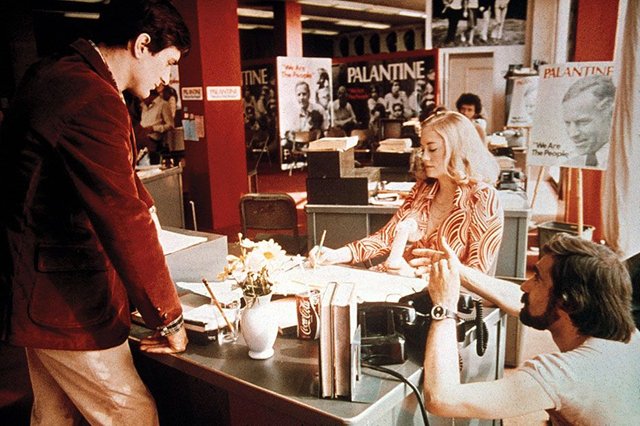
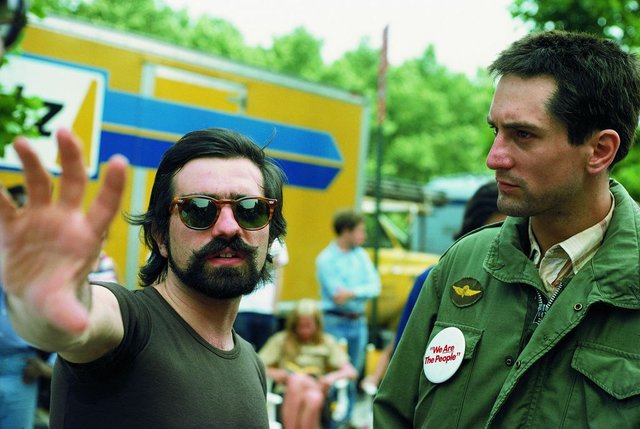
Cast Reunite To Mark 40th Anniversary
(1) Diary Of A Screenwriter, Paul Schrader: Notes On Taxi Driver
(2) An Integral Analysis of Martin Scorsese´s 'Taxi Driver', Seminar Paper, 2006
(3) SparkNotes → Film Study Guides, Taxi Driver
(4) Roger Ebert, Taxi Driver Analysis
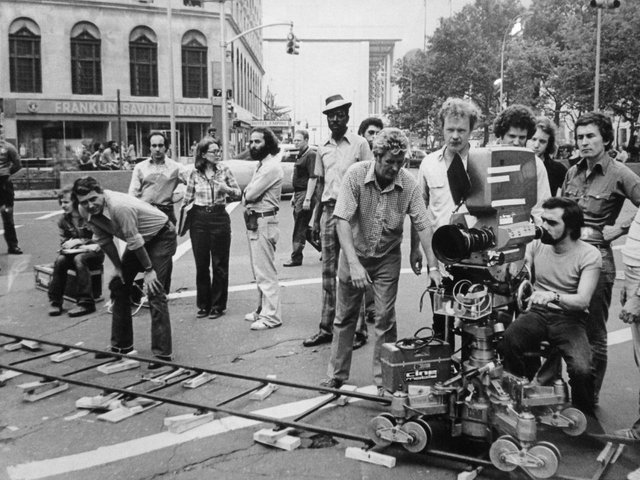

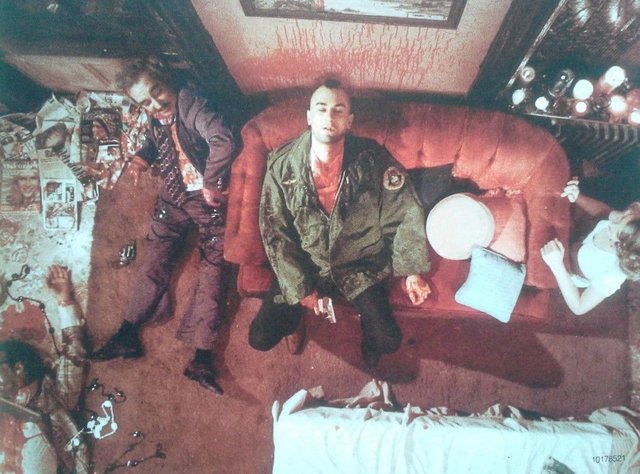
That top down shot of the couch is just so iconic. LOVE that one especially a lot. 📸 <3
Downvoting a post can decrease pending rewards and make it less visible. Common reasons:
Submit
@thi-js
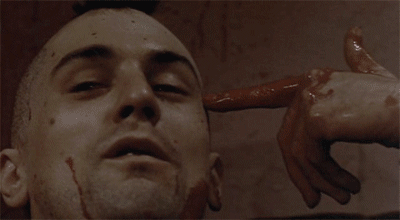 :)
:)
Downvoting a post can decrease pending rewards and make it less visible. Common reasons:
Submit
It is a sick shot right?
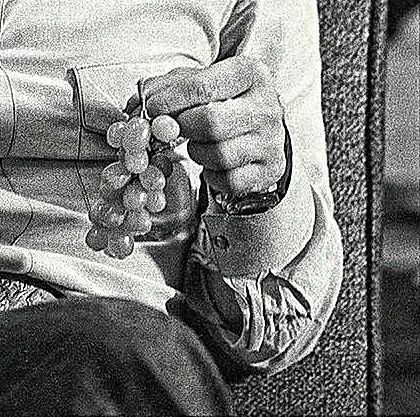
Downvoting a post can decrease pending rewards and make it less visible. Common reasons:
Submit
that detail is more sick than the gun :D
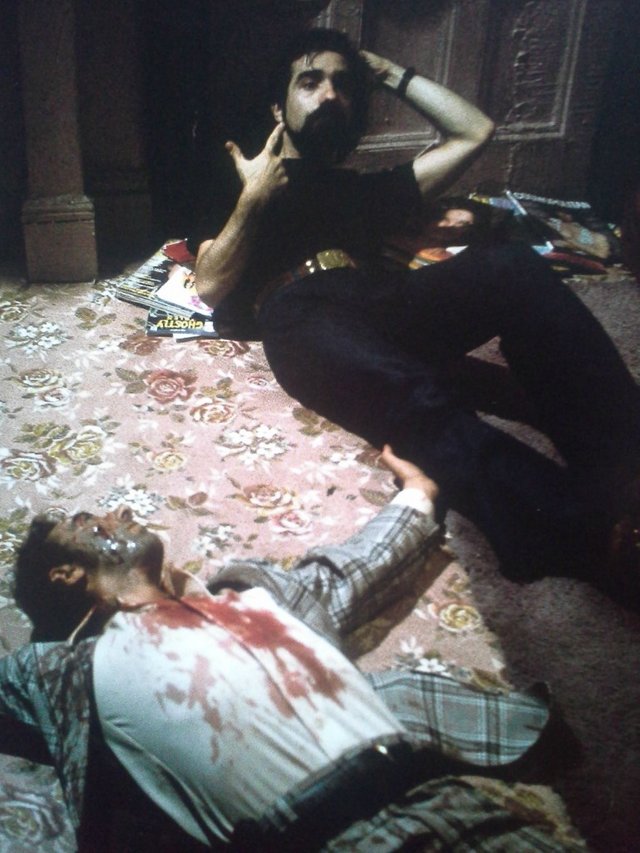
this one is iconic too:
Downvoting a post can decrease pending rewards and make it less visible. Common reasons:
Submit
One could say we are now kind of a gore loving sub thread... XD. Not perse what we are trying to proof right?
Downvoting a post can decrease pending rewards and make it less visible. Common reasons:
Submit
@thi-js
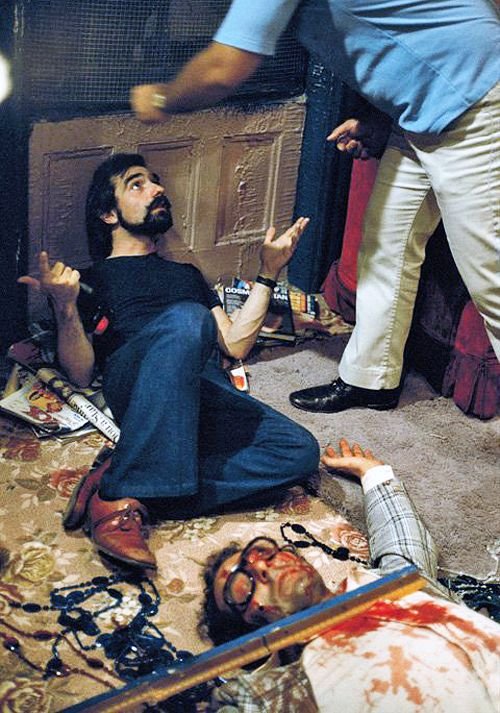
weel, in-fucking-deed :)
in that name, last one!
Downvoting a post can decrease pending rewards and make it less visible. Common reasons:
Submit
Wishing you a merry Christmas now seems. Weird but well, Merry Christmas. <3 this was interesting.
Downvoting a post can decrease pending rewards and make it less visible. Common reasons:
Submit
@thi-js
Merry Christmas! <3
Downvoting a post can decrease pending rewards and make it less visible. Common reasons:
Submit
Movies that can inspire us ...😎😎😎
Downvoting a post can decrease pending rewards and make it less visible. Common reasons:
Submit
Great analysis.
Downvoting a post can decrease pending rewards and make it less visible. Common reasons:
Submit
Well written, your details are a reminder for me to witness the classic again..!!
everyone at their best..!!
Downvoting a post can decrease pending rewards and make it less visible. Common reasons:
Submit
My favorite film of all-time!
Downvoting a post can decrease pending rewards and make it less visible. Common reasons:
Submit
Like when I read Taxi Driver
Downvoting a post can decrease pending rewards and make it less visible. Common reasons:
Submit